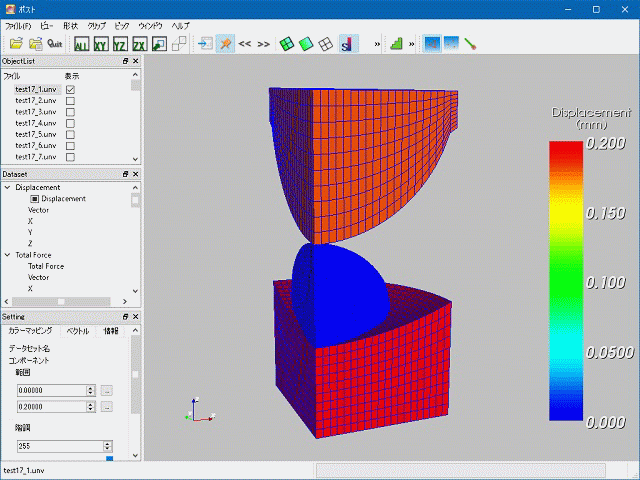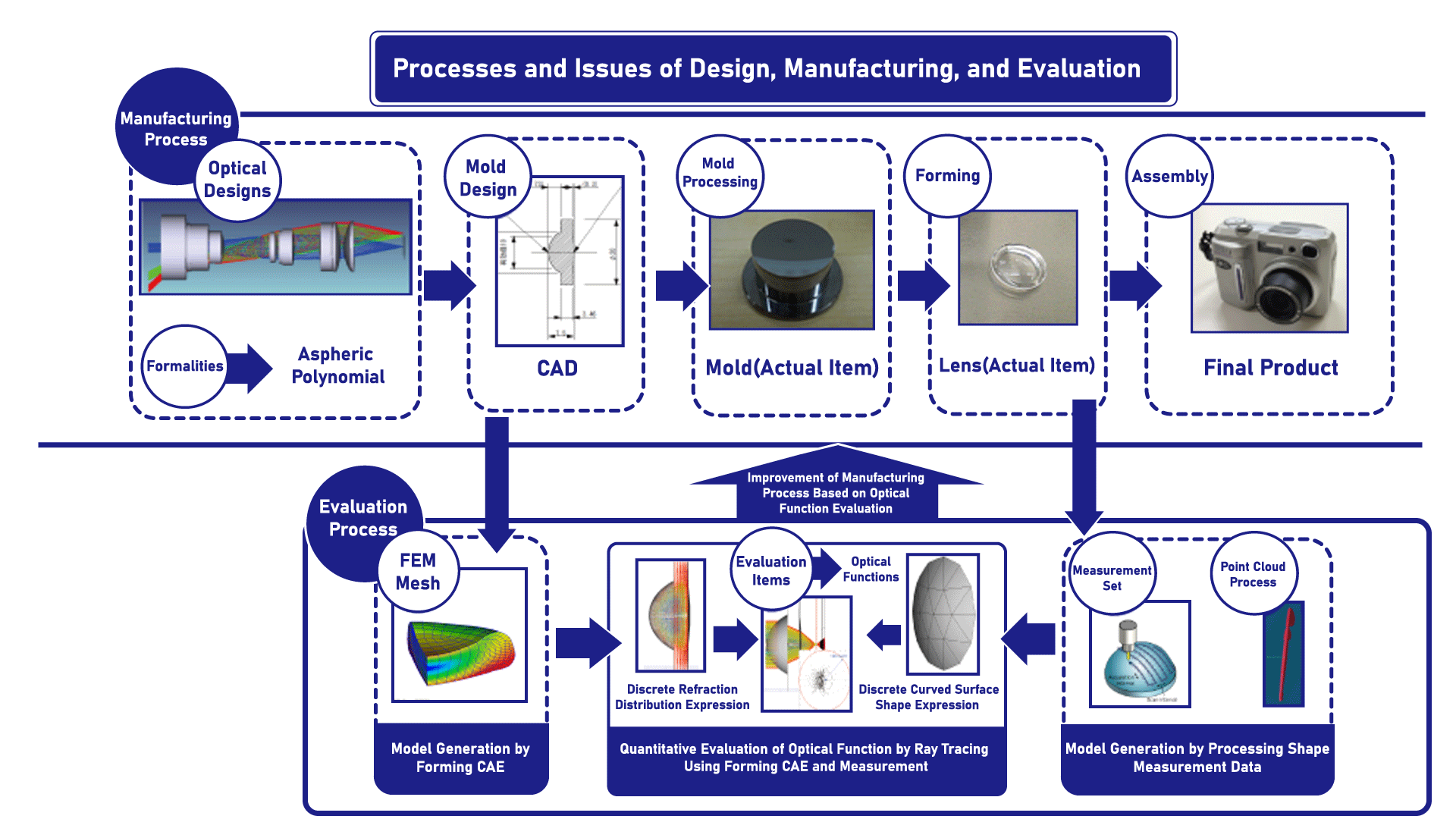CAE Project

About V-Glace
[Glass Mold Simulation CAE Software]
V-Glace The “World’s First” CAE software
The “World’s First” CAE software that can simulate the process of glass mold forming by incorporating glass properties, developed in collaboration with RIKEN. 3D simulation of the glass mold forming process using V-Glace enables process optimization and results analysis.
Glass Mold
The software can perform stress analysis, heat transfer analysis, structural relaxation analysis, and viscoelastic analysis of molds and glass during the pressing process at high temperatures.
In particular, it can be used as a guideline for process optimization because it can output virtual temperatures that serve as an indicator of changes in the glass state during the cooling process. As a result, the intuition and experience of skilled workers and the behavior of samples in the mold, which until now have been a black box, can be quantified, contributing to improved quality and productivity through the accumulation of know-how.
In particular, it can be used as a guideline for process optimization because it can output virtual temperatures that serve as an indicator of changes in the glass state during the cooling process. As a result, the intuition and experience of skilled workers and the behavior of samples in the mold, which until now have been a black box, can be quantified, contributing to improved quality and productivity through the accumulation of know-how.

Video of Simulation Results
Shorten Development Period and Reduce Costs
By performing a simulation before mold design, it is possible to predict correction points such as molds, molding conditions, and preforms. As a result, the number of mold modifications and prototypes can be reduced, contributing to shorter development times and lower costs.

Lens Molding Process Diagram
Simulation Samples
We present four sample simulations.It is possible to analyze the heat transfer, shape change, stress time changes, of the glass material in the mold with animation.This allows us to observe the differences in glass material behavior caused by differences in preform geometry and molding patterns.
*Sample shows 1/4 of the whole
*Sample shows 1/4 of the whole
-
Ball Lens
-
Meniscus Lens
-
Cover Lens (Smartphone Cover Glass)
-
Micro Lens Array(3×3)
Examples of Analysis Undertaken
We undertake simulations based on information provided by the customer, including the shape data of molds and preforms, control information such as load, displacement, and temperature conditions during the molding process, and the name of the glass material used. We construct simulation models and conduct molding simulations. We can provide final shape, residual stress distribution, deformation process during pressing, etc. Additionally, parameter surveys based on specified multiple conditions are also possible.
Example of Undertaken Simulation (Illustration)
Molding Consultation
We provide consultation on mold shapes, preform shapes, molding process conditions, and other factors to ensure stable production, proposing optimization of the molding process.
Contract Analysis of Physical Properties
It measures and records the physical property values of samples used in simulations, thereby contributing to more accurate simulations. This includes parameters such as creep, friction coefficient, and structural relaxation, which are essential for the simulations.
| Item | Mesuring Method | Mesuring Device |
|---|---|---|
| Young’s Modulus /Poisson’s Ratio |
Ultrasonic Pulse-Echo Method | Modulus Measuring Device |
| Thermal Conductivity | Pulse Heating Method | Xe Flash Analyzer |
| Specific heat, Coefficient of thermal expansion | Differential Thermal Analysis, Thermogravimetry | Thermal Analyzer |
| Density | Specific Gravity | Electronic Balance |
| Grip Parameters | Compression Experiment | Material Testing Machine |
| Coefficient of Friction | Ring Compression Experiment | Experiment Using a Molding Machine |
| Structural Relaxation Parameter | Density Mesurement(Specific Gravity Measurement) | Experiment Using Structural Relaxation Measurement Equipment and Specific Gravity Measurement |
| List of Measurement Items | ||
Latest Information
- In preparation
Software Environment
- Operating System
- Windows10
- CPU * Multi-Socket Support Planned
- Intel CPU (Core i series, Xeon series,6 cores or more recommended)
- Memory
- 16GB or more is recommended
- HDD
- 1GB (installation area, 500MB or more data area)
- USB Port *A USB hub can be used
- 3 pieces (for solver, for meshers, for post)
- Screen
- FHD (1920 x 1080) or more recommended (*) Multi-socket compatible
